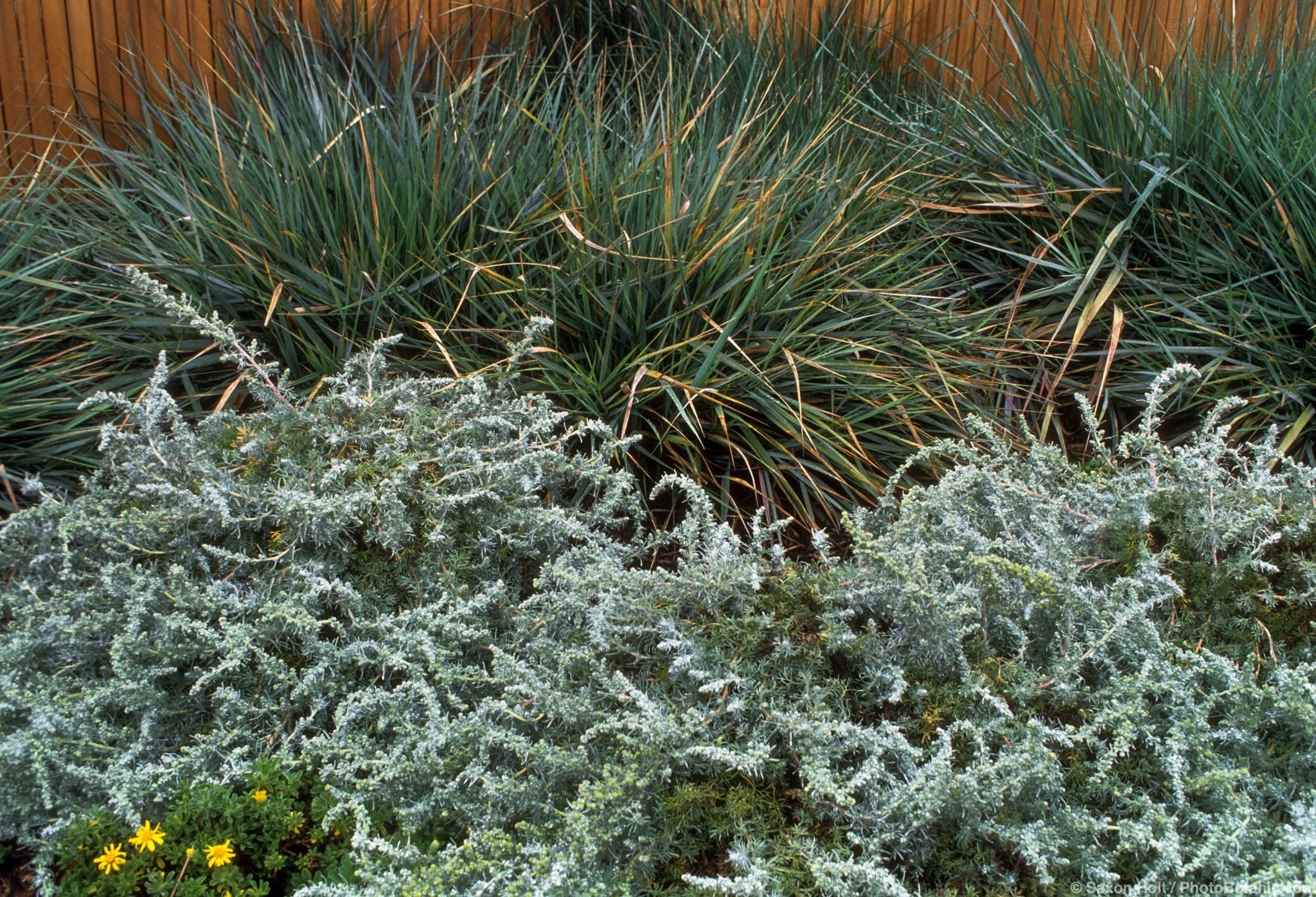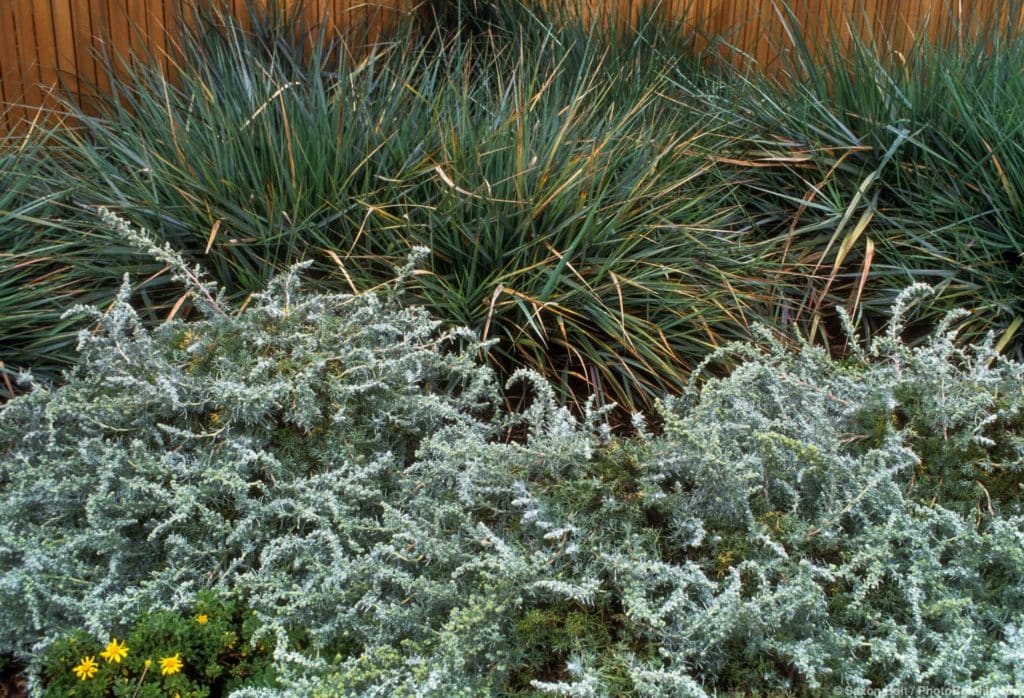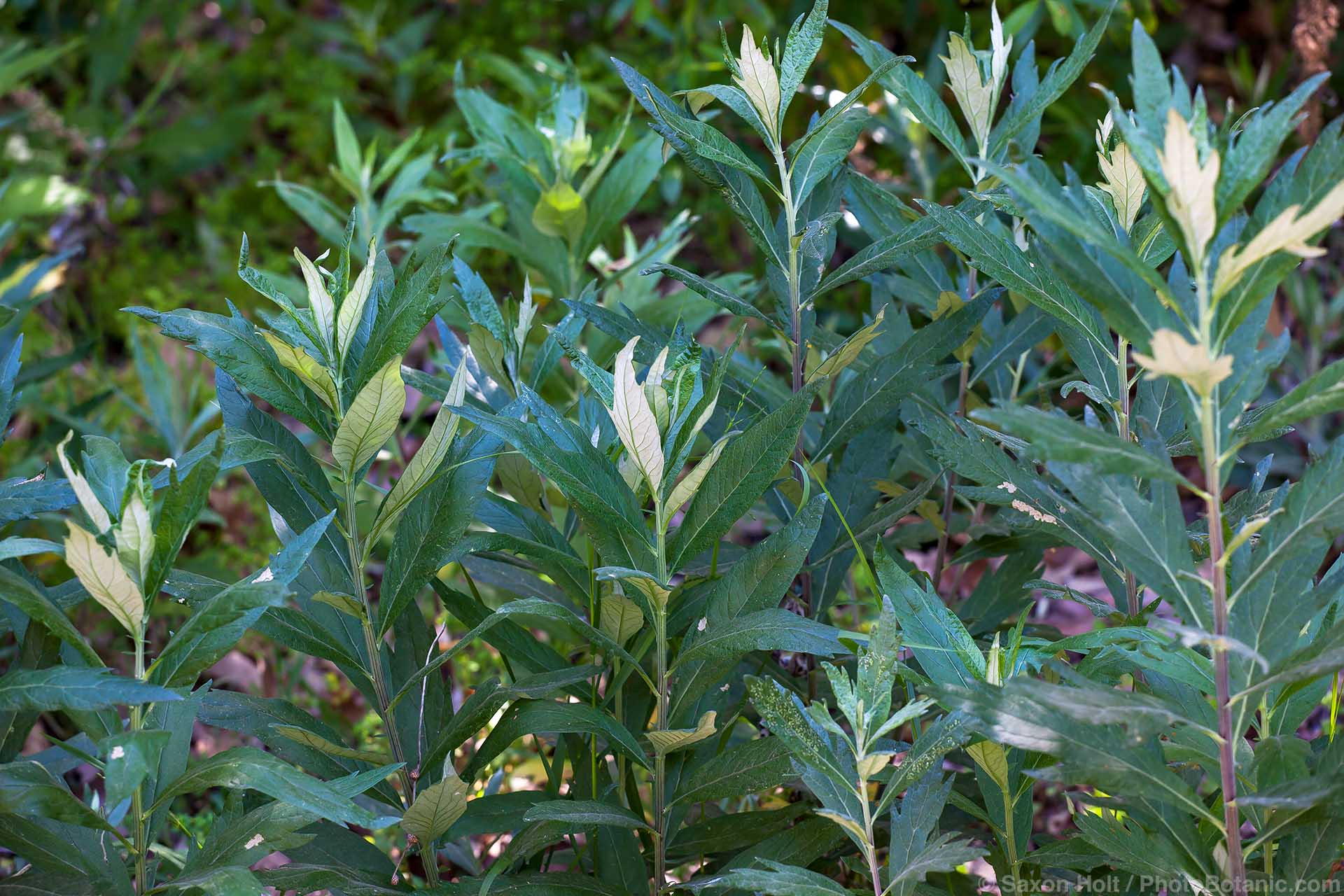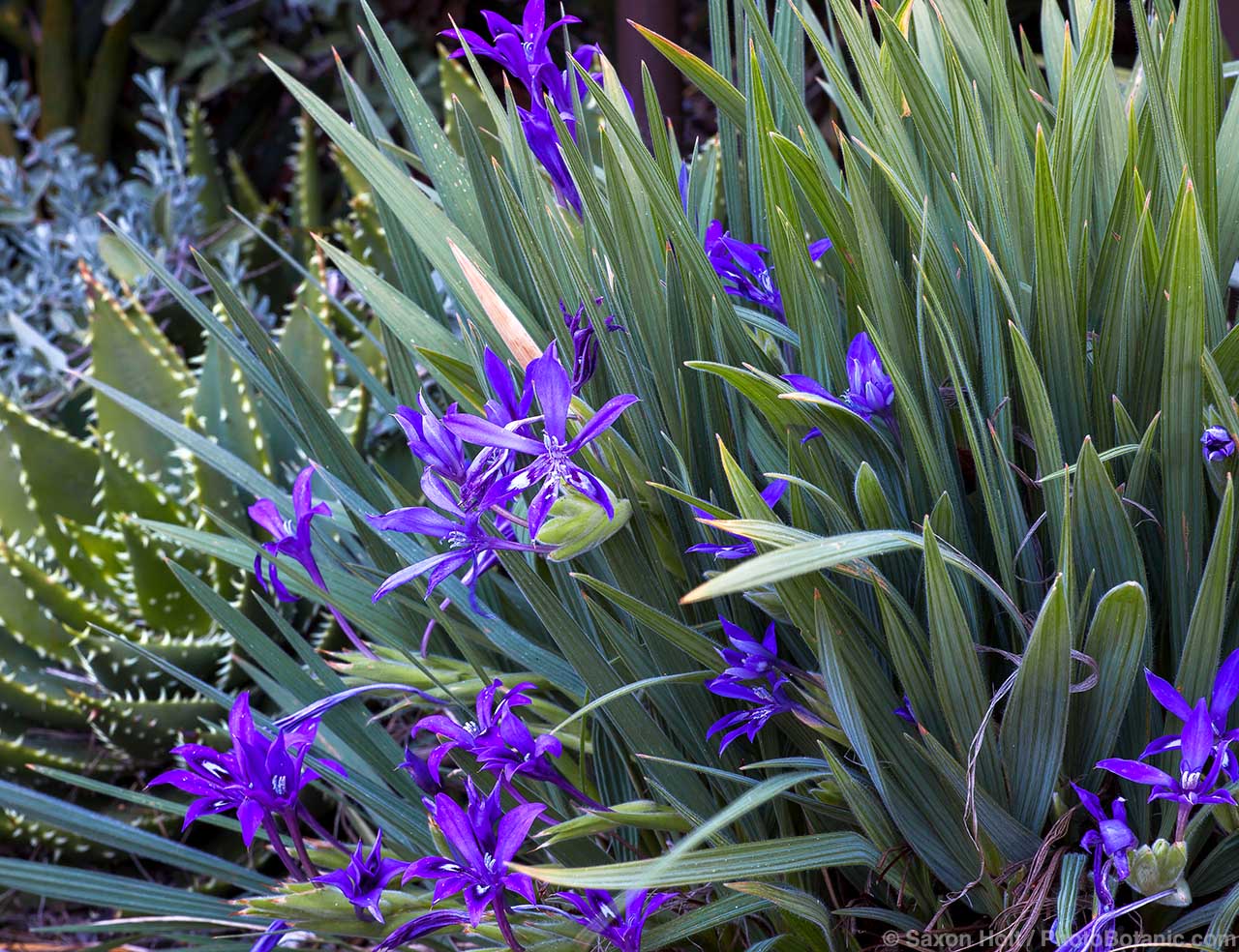Leymus condensatus ‘Canyon Prince’

Share This!

Leymus condensatus ‘Canyon Prince’ with Artemisia pynocephala ‘David’s Choice’ in foreground
This is a wonderful grass if you have the space for it and don’t need to try to contain it. Left to its own devices, Leymus condensatus ‘Canyon Prince’ billows around in a large meadow planting, giving the impression of movement without the slightest breeze. It also makes an effective bank cover, its extensive root system grabbing and tightly holding the soil and its leaves cascading like falling water. It is especially nice as a background or complement to other plants.
Coming out bright green in spring, this warm-season grass turns a lovely gray-green as the season progresses, ending in a striking late-summer display of wheat-colored seedheads on tall stalks.
It’s only fair to warn those considering this plant that it is decisively invasive. Infiltration is initially slow, so you may not notice it for some time. But ultimately this grass will try to take over adjacent plantings, and chopping out advancing pieces may slow but not stop the invasion.
I cut this grass a few inches above the ground in late winter or early spring every year, in part because this provides an opportunity to pull out invasive weeds hiding beneath the grass. This also allows me to see and remove dead culms that impede the growth of new stems, ensuring that both the plant and the colony retain their dense and appealingly architectural form. New growth begins to return almost immediately after cutting back.
‘Canyon Prince’ grows two to three feet tall with flower stalks another foot or so above the leaves. Spread is indeterminate, with gradual widening to cover extensive areas if not continuously restrained. It is best planted where spread need not be controlled, and is striking in a large container along with orange or purple-flowered companions spilling over the sides. I first saw it, many years ago, in a pot with epilobium and was instantly smitten.
Plant this grass in full sun almost everywhere but in desert or hot interior locations, where it will appreciate either part shade or water. In sun near the coast it is best with little to no summer water, which will only encourage its rampant spread.
Share This!
Related Articles
By: Nora Harlow
By: Nora Harlow
By: Nora Harlow





